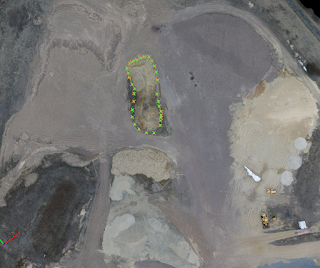The purpose of the weeks assignment was to collect the data for my final project which is based off my project proposal. We flew flights at three hours intervals collecting thermal imagery with the UAS platform. The first three flights and the last flight of the day were conducted with Mr. Mike Bomber, Dr. Joseph Hupy, and myself. We were joined for the 3:00 pm flight by the rest of the UAS class who were collected additional data for their own purposes. Additionally, I collected in situ surfaces and soil temperature values immediately following the flights. The following blog post will display the methods we utilized to collect the data.
Methods
The collection of data started at 6:00 am on 4/18/2016 (Though the first flight did not get launched till shortly before 6:30). The same process was completed every three hours for a total of 5 flights and temperature values collected. I utilized the Matrix platform fixed with the thermal sensor we have used in previous lab exercises. I created a flight mission which covered my study area thoroughly while maintaining a short enough flight time to complete the mission in one flight. Dr. Hupy laid out 6 portable GCP markers and collected their locations with the dual frequency GPS in hopes of being able to see them in the imagery (Fig. 1).
- Blacktop
- Mowed Lawn
- Prairie Grass
- Garden area with straw covering the soil
- Garden area with woodchips & straw covering the soil
- Wooden deck surface
- Roof with asphalt shingles
- Conventionally tilled farm field
- Wood chip pile
- Raised garden bed soil not covered
 |
| (Fig. 1) Display of the GCP marker locations and the temperature sampling locations in the study area. |
I collected surface temperatures immediately following the completion of the flight utilizing an infrared thermometer (Fig. 2). Simultaneously, I collected soil temperatures from the same location utilizing probe thermometer. I will be utilizing the surface temperatures to calibrate the image values to display the temperature change of the surfaces throughout the day. I hope the soil temperature values will display the correlation to soil coverage and the reduction of temperature values.
 |
| (Fig. 2) Thermal infrared thermometer utilized to collect surface temperature values |
Results
The final results have not been produced yet. I have completed the first step of creating a mosaic image in Pix4D software (Fig 3). The remainder of the research will be conducted in the up coming weeks.
 |
| (Fig. 3) Display of the mosaic image from the 12:00 PM flight. |












